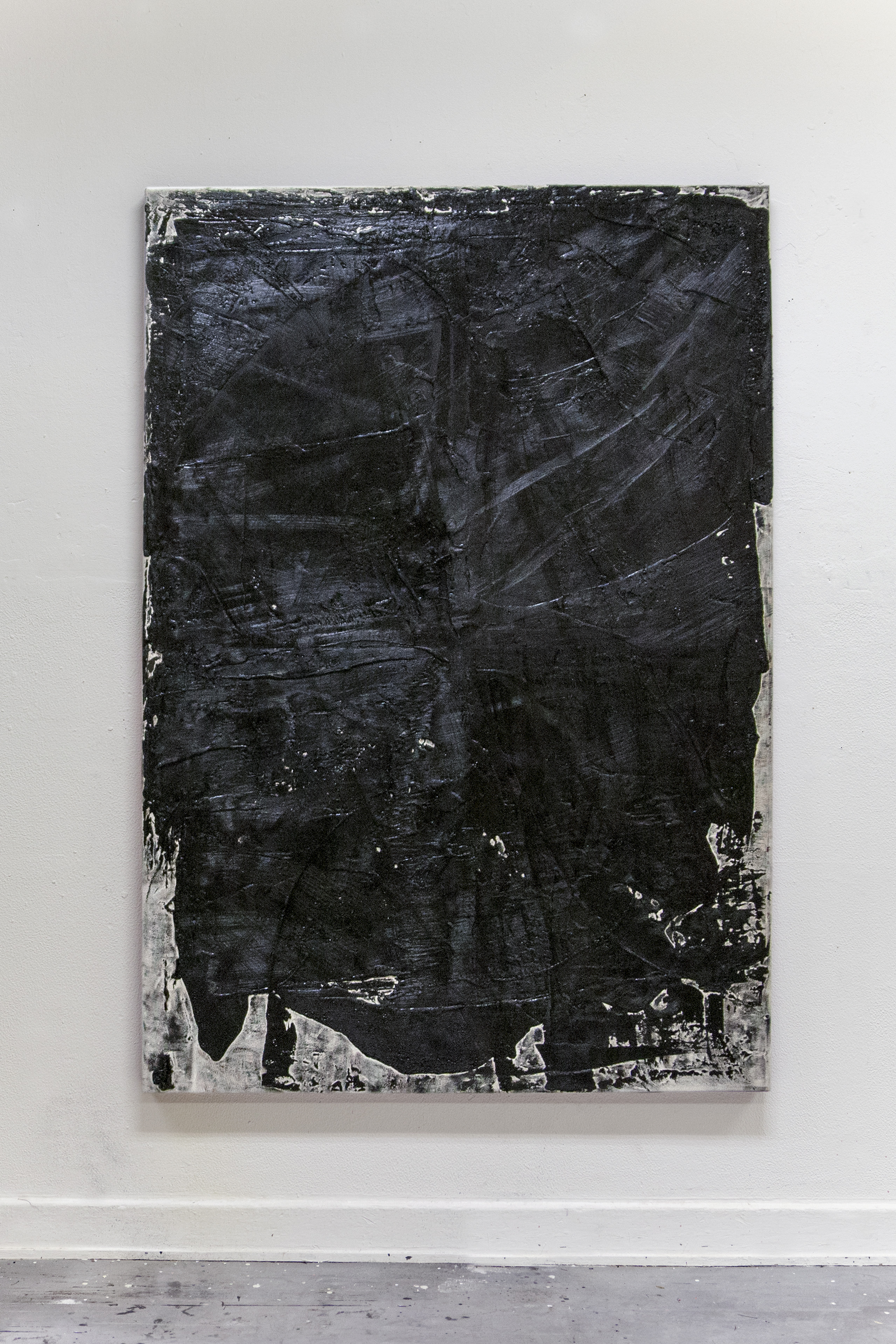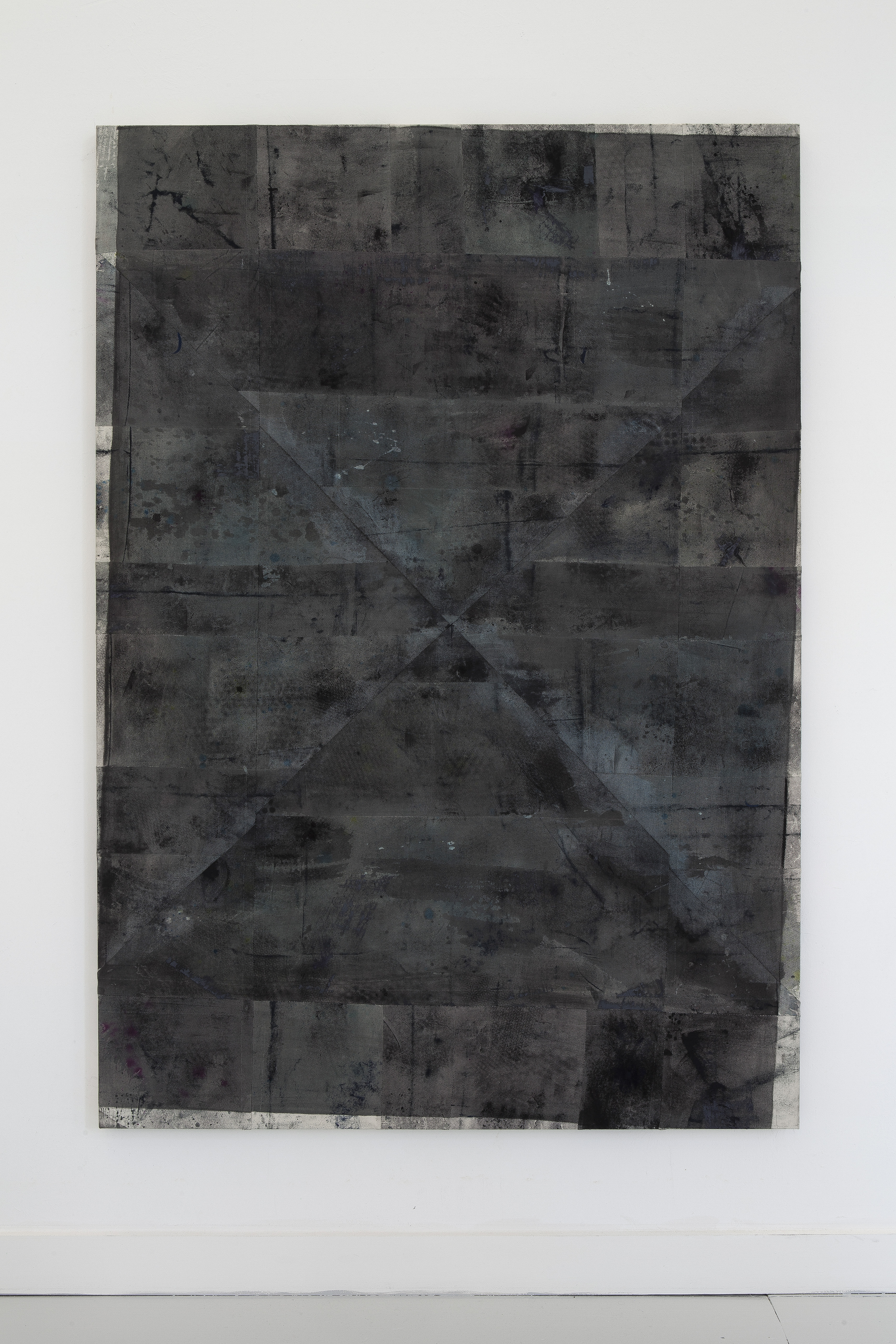Q&A – Colin Penno
Q: Tell me about your background?
I grew up in Mülheim, a medium-sized city in the Ruhr Metropolitan Region: a conglomeration of numerous cities strongly marked by the steel and coal industries; a working-class milieu with a large Turkish community. My parents both worked for the post office; and my father’s father was also a postman… I thus descend from a dynasty of postmen… Haha!
Art and culture played no role in my family. I spent most of my time outdoors, hanging out with the gang. I had a lot of friends in the neighbourhood, and I’d ride through the streets every day on my BMX or skateboard. We were very interested in subcultures; skateboarding, punk rock, and Hip Hop had the greatest influence on me. There were many illegal parties and concerts. We were very active, but a lot of things we did to kill time weren’t always kosher. But we were imaginative and had a lot of fun. In the end, however, not all of us were able to use our subversive energies in a constructive way.
Q: Do you remember the first artwork you made, and can you tell me about it?
When I was a child, I had a cassette player, which I used to record my own radio shows and mix ambient noises and sounds from the TV… There was something creative about this. Later on, I found school to be so boring that I distracted myself by drawing in my exercise books. Since I never studied or did any homework, I became quite professional when it came to cheat sheets. I developed my own language using symbols and icons so that I could fit as much information as possible onto the smallest piece of paper.
This reminds me that, as a child, I once nailed mussel meat onto a board about the size of a piece of A4 paper and thought to myself: ‘Hmmm… It kind of looks like art.’
Q: Was there a particular moment or event where you decided to become an artist?
I don’t think there were any key moments. I just kind of slipped into it somehow. I was always making and doing things in order to express myself visually. But to pursue a career as an artist was not a conscious decision from the start. For a very long time, I didn’t even know that you could study art. Before I enrolled in the academy in Düsseldorf, I studied Communication Design with a focus on photography and illustration at the Folkwang University of the Arts in Essen. One of my main motivations for going to school was also to postpone entering the job world. I was never good at dealing with authority and never wanted to carry out trivial tasks for others… And at the time, a lot of things seemed very trivial to me. I experimented a lot during my studies of design and constantly looked for a way to work more autonomously and interdisciplinarily. The logical consequence was to go for a second degree at the Academy of Art.
Q: What influences you?
It’s hard to say. I enjoy observing things that at first glance might seem irrelevant – there’s quite a bit to get out of this.
In my studio, I’m constantly and quite consciously listening to music and enjoy discovering new tracks that convey something special for me.
And, of course, the freedom to lead a self-determined life.
Q: Can you tell me more about the process in your works?
My work develops for most part out of itself. I use various printing processes, whereby I’m not interested in illustrating something particular, but rather more in the methods in and of themselves, as well as the ‘faulty’ characteristics of each process. And there are also paint splatters, footprints, and traces left behind by paintbrushes, which occur coincidentally or uncontrolled when I’m working on other pictures, since I often recycle canvases which I had previously laid out on the floor. I generally work on individual pictures instead of in series. Or I work on several formats at the same time, in order to cut them apart and arrange them in a different way at a later time or sew them together to create a larger format. Aside from oil, acrylic, and such, I also often use very thin paints (usually C, M, Y, K), which I partially remove again through a bleaching process – but also everyday and non-art materials that aren’t intended to be used as paint, such as bitumen. With this combination of various processes, I create a kind of source material which, in the next step, is sewn together to create a picture with a controlled composition. The individual steps always vary and never follow a particular logic. This results time and again in works that don’t really fit in, but they’re important for the further development of my art.
Q: The idea/concept surrounding your work – can you tell us more?
I’m constantly recognizing parallels to works I made about ten years ago, when I was concentrating on conceptual works based on photography. At the time, I was already working with silkscreens, lithographs, and laser prints, as well as with pieced-together formats and site-specific installations which, as a result of their self-referentiality, questioned their own context and representativeness.
It was important to me at the time to contradict the cliché of the artist-genius through vulgar gestures, through the means of reproduction and the use of technical methods and materials. There were also always deliberate breaks, which thwarted the analytical part in an ironic way…
For me, it’s also a play with the universal validity, the intrinsic value, and the glorification of the work of art. Maybe that’s why I cut the canvases?! And there are also works, for example, where I don’t care if they’re hung in a particular direction.
Over the course of the development of my work, the conceptual level that lurks behind the surface has taken on a life of its own and constantly transforms itself. It is thus still part of the work, although it has in fact become much more subjective. In any event, I don’t think about it very actively anymore and strive instead to focus primarily on the formal level of the works. As part of the whole, the conceptual references contribute to the autonomy of the picture – without, however, pointing to anything in particular.
Q: Can you tell me more about the traces of footprints and staples we see in some of your works?
I usually work on the floor, using wooden boards to press oil paint onto the canvas.
During the printing process, staples lying on the floor underneath – remnants from an intermediate stage, during which I sometimes stretch and un-stretch sewn-together canvases – leave their impressions. For a while, the canvases lie all over the place in the studio and pick up paint and dirt, and sometimes even my own footprints.
I gave up a long time ago trying to be meticulous with my working materials. I find the organic process so much more exciting, since it develops out of a natural attitude and out of itself, so to speak.
Q: What is most important to you regarding your work?
To work independently and constantly develop the work further out of itself. I think that, in this way, it will always remain interesting.
Q: Can you tell me more about your routines and rituals in your daily practice?
My daily routine is relatively well structured. I usually bring our two daughters to school and the nursery. I then ride my bicycle to the studio. I usually stay there until about 6:30 p.m. – or until about 3:30, when I have to pick up the kids again because my wife has to work longer.
Twice a week, I try to go skateboarding with the guys – at least when the weather’s not so shitty…
On weekends, I usually visit exhibitions and meet people.
Sundays are family days.
Q: Can you let us in on some of the future projects, works?
No!
🙂
Right now, I have an exhibition up at Geukens Devil in Antwerpen.
I’m also currently working on new works, which I’m already looking forward to, since they further develop several fundamental parameters in my work… I don’t want to say anything more at this point. At the very latest in the coming spring, you’ll be able to see them at Berthold Pott’s booth at the ART COLOGNE.





